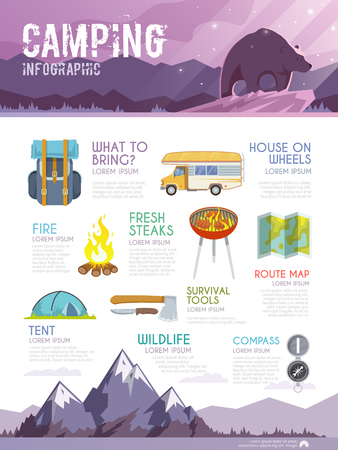Turn Non Buyers Into Buyers Online When Selling Camping Tents
Turn Non Buyers Into Buyers Online When Selling Camping Tents
Blog Article
How to Appropriately Establish Your Outdoor Tents Prior To Camping
Establishing your outdoor tents can be a daunting task for even experienced campers. This guide will cover the essentials of pitching a tent properly and securely so you can appreciate your outdoor camping journey without stress or fear.
What are the best quality tents?
Begin by outlining your outdoor tents's impact and ground sheet to secure your camping tent flooring from rocks, sticks, dirt, and other debris. Next off, construct the outdoor tents posts and secure them to the corners of the camping tent body using the appropriate sleeve or hook.
Choosing the Right Website
When you are worn down after a lengthy day walking, you wish to pitch your camping tent and prepare to sleep. But you need to initially walk around the site to ensure it is risk-free for camping. Look down and up to figure out whether any type of trees have big dead branches that could fall on your outdoor tents. These are often called widowmakers and you don't want them to go down on you while you're resting.
Likewise be sure to avoid reduced areas that could flood throughout a tornado and to camp far from animal trails, nests and habitats where ticks and chiggers are more than likely to grow. Look for a flat, rock-free spot that allows sufficient for your camping tent and any other gear you'll be bringing.
Some individuals like to establish their camping tents up so the head end is pointed towards the eastern to catch the sun's warming rays first thing in the morning. This isn't constantly required, but it is a wonderful touch that can assist wake you up.
Pitching Tips
It may seem evident, however proper camping tent pitching is among the most important factors in a good night's sleep. Having a practice run in your home will aid you acquaint yourself with your tent, locate all the post sleeves and fasteners, and make sure every little thing remains in place. It's additionally a fun time to practice making use of guylines for security and to discover any kind of damaged pieces.
When you get to your outdoor camping site, examine the surface to see if it's suitable for your tent. An excellent general rule is to pitch the camping tent on a flat, degree spot with a mild downhill angle. This will certainly enable rain to recede from the tent as opposed to pooling before it.
If you can not find a degree area, take into consideration putting a tarp or various other groundsheet under your camping tent impact to secure it from moisture. This can additionally assist keep dirt out of the camping tent.
Using Guylines Properly
Utilizing guy lines successfully is necessary to seeing to it your camping tent or hammock stays safe in high winds and other negative weather. An individual line is a rope or cord that affixes to the ground via loops and D-rings in the framework, tarp, or rainfly.
Beginning by protecting one end of the line to a guyout loophole on your camping tent or rain fly, or to the post it's attached to. After that loop the various other end of the line over a stake put faraway from the structure and tighten it.
Maintaining your shelter's person lines tight will protect against drooping or drooping during gusty conditions, stopping moisture from permeating into the camping tent or damages to the structure and boosting comfort and security throughout camping. Constantly examine the tension of your person lines throughout and after unfavorable climate condition to ensure they stay safe and secure. Additionally, take into consideration loading a man line tensioner to conveniently adjust and preserve the correct amount of stress in your lines.
Removing the Tent
When clearing up right into your camping site, find an area with a level area and clear it of rocks and debris. Additionally, be sure to put down an outdoor tents footprint or tarp somewhat smaller sized than your tent body to avoid water merging. This helps keep your outdoor tents dry from rainfall or condensation and can be specifically useful in gusty locations.
Examine your equipment, consisting of the tent things sacks to see to it nothing is missing. Inspect camp canvas that the posts fit into their clips and restock first-aid products if required.
When it's time to pitch your tent, begin by orienting the doors downwind, and stake down each edge of the outdoor tents. If the ground is loose or sandy, consider spreading a tarpaulin under your outdoor tents to protect it from wind and minimize the chance of your outdoor tents toppling. Also, be sure to utilize guylines properly to restrain your rainfly and keep it taut. A well-pitched camping tent can protect against leaking, condensation, and sun damage.
What are the best family tents?
